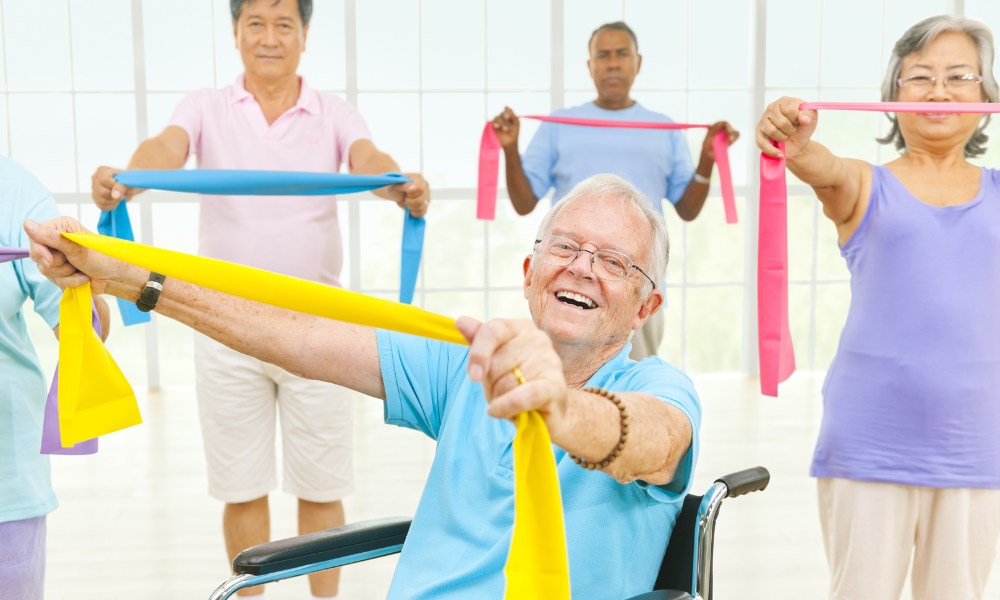By Tracey Connell
Regular exercise is an integral part of a healthy lifestyle. However, exercising with limited mobility due to an injury, disability, or underlying medical condition can make staying physically active daunting. People with long-term injuries or mobility issues tend to live less active lifestyles, and because of this, it can be even more critical to exercise regularly. Despite limitations, an exercise plan boosts your mood, eases depression, relieves stress and anxiety, enhances self-esteem, and improves your outlook.
You can still exercise in several ways even with limited mobility or a mobility device. The National Institute on Aging recommends four components of physical activity: balance, strength, flexibility, and endurance.
- Balance workouts can help prevent falls. Balance exercises, including heel-to-toe walks, standing on one foot, or Tai Chi, help enhance stability. For safety purposes, ensure you have a chair or another person to hold onto for these exercises.
- Strength-building workouts can involve using weights or resistance bands. Resistance training helps build muscle and bone mass, improves balance, and prevents falls. For those with limited leg mobility, training can focus on the upper body or strengthening the legs if one has issues with the shoulders or upper body.
- Flexibility involves stretching movements. These include exercises like calf stretches and back and shoulder stretches. Stretching improves flexibility, reduces tightness, and makes exercise routines more efficient and safe.
- Physical endurance exercises include walking, biking, doing yard work, or swimming. Swimming in particular can be an ideal workout for older adults mainly because it presents little risk of injury and is low impact. Pool therapy programs are available for wheelchair users at gyms and health clubs. Depending on the level of mobility, a water aerobics class can help with balance and endurance.
Before considering an exercise regimen, getting clearance from your primary care provider is crucial. Although exercise has benefits, starting a new activity without precaution and planning increases the risk of an injury. Asking your provider for a referral to physical therapy can be a great place to start. A physical therapist can help you develop a home exercise plan individualized to your specific needs.
According to the CDC’s 2018 Physical Activity Guidelines for Americans, adults need 150 minutes of moderate-intensity physical activity and two days of muscle-strengthening activity per week. If a mobility issue or injury makes it difficult to meet these guidelines, aim to engage in regular physical activity according to your fitness level and avoid inactivity whenever possible. Don’t let limited mobility prevent you from staying physically active. No matter your situation, there are several ways to exercise and stay fit.
Locally, you can find fitness plans that include the four exercise components across the tri-county at Bend Park and Recreation District facilities, the La Pine Senior Activity Center, Fitness 1440, and Planet Fitness.
The Council on Aging of Central Oregon and many of our local partners like Oregon Wellness Network value health and fitness for older adults. Our Health Education Classes page has a list of evidence-based classes that encourage healthy lifestyle activities and enable older adults to have a higher quality of life. Some of these courses, such as Living Well with Chronic Conditions and Better Bone and Balance, are sponsored by the Council on Aging. Additionally, we have a Classes & Events page that advertises upcoming meetings and courses, many of which are health and fitness related.
Exercising with limited mobility is not only possible but is crucial for maintaining overall health and well-being. By focusing on balance, strength, flexibility, and endurance exercises, individuals can improve stability, prevent falls, build muscle, and enhance flexibility, all contributing to a healthier lifestyle.


